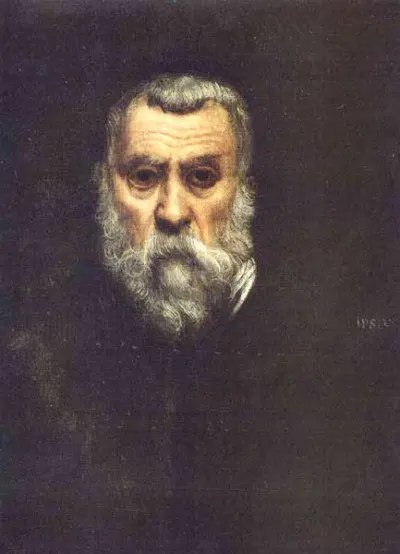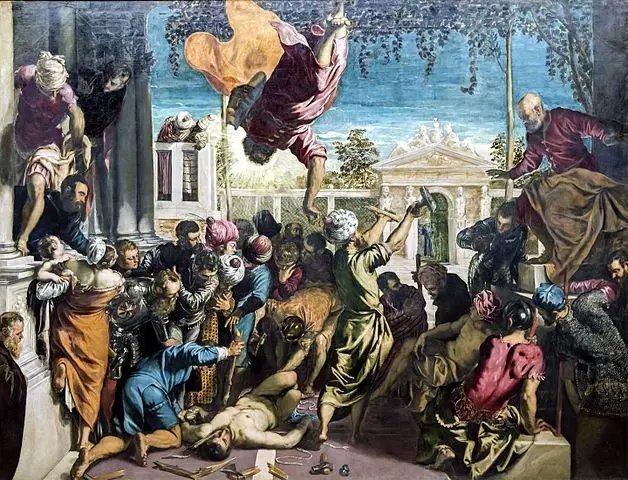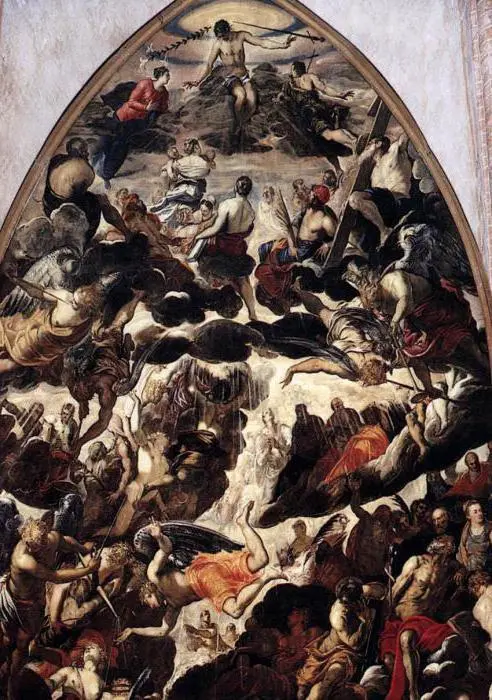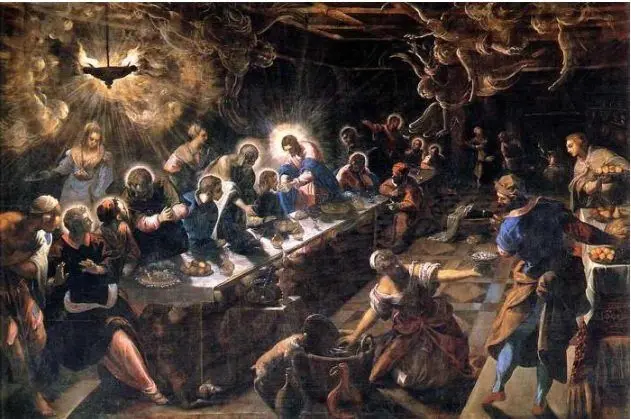Contents
😉 Greetings to art and history lovers! In the article “Tintoretto: Pictures, Biography” – about the painter of the Venetian school of the late Renaissance Jacopo Robusti (Tintoretto).
Tintoretto: biography
Tintoretto – future famous artist Jacopo Robusti was born in Venice. The archives do not contain documents about the date of his birth. Art critics call it approximately, focusing on the date of death. In the church archives there is a record that the master Jacopo died on May 31, 1594, he was 75 years old. So the year of birth is 1518.
However, many historians refute this statement, referring to the work of R. Borghini, published in 1584. The author reports that Tintoretto died at the age of 60. According to Borghini, the artist was born in 1524.
The third version is substantiated by the biography of Robusti, written by Carlo Ridolfi, the painter’s biographer, which says he was born in 1512. Officially, in the art world, it is considered the date of birth of Jacopo Robusti – 1518.

Jacopo Robusti (1518-1594). Self-portrait. 1588, Paris. Louvre.
Jacopo got his nickname in early childhood. His father was engaged in dyeing silk fabrics and his little son on the street began to be called Tintoretto (“little dyer”). In addition to this extremely scarce information, unfortunately, nothing else is known about the artist’s parents and childhood.
Painting historians have only information gleaned from the book of Ridolfi. But some researchers treat the facts from this biography of Tintoretto with some disbelief. Ridolfi was not personally acquainted with Jacopi, since he was about two months old when the painter left this mortal world.
Many of the information used in the book, Ridolfi learned from a conversation with the son of Jacopo Domenico. The author is an ardent admirer of the artist’s talent, so he sometimes corrected his biography. It is clear that he could not describe his childhood and adolescence.
He writes that from an early age Jacopo was fond of drawing and could do it all day. He also loved to see how cleverly his father handled multi-colored paints.
In Titian’s workshop
Jacopo went to study with Titian, but he was jealous of the undoubted talent of the young man and expelled him after 10 days. It was not possible to find documents testifying to this fact.
If this fact took place, then most likely, the quarrel between the master and the student occurred due to the complete incompatibility of their characters.
The always quiet and level-headed Titian and the explosive, impulsive 13-year-old Jacopo. A life-wise master and a very young student. It is possible that to Titian’s calm remark, Tintoretto responded with some kind of taunt and was expelled.
Jacopo entered another workshop, since there were many worthy masters in Venice at that time. One of the archival documents says “Master Jacopo, painter”.
Creativity Tintoretto
Few works of this remarkable master have survived. Perhaps the reason is that he often painted facades. At the same time, he writes The Miracle of St. Mark, which is considered by art critics to be the beginning of the painter’s career. This work was written for the church fraternity, which, whenever possible, helped the poor.

“Miracle of St. Mark ”, 1548. Accademia Gallery in Venice
This work, according to some art critics, “breaks out” of tradition by composition and dynamism. The brotherhood refused from the canvas and, accordingly, from the payment for the work.
However, the opinion of the townspeople and a heated discussion, reaching the point of violent controversy, attracted attention to the artist. He was inundated with orders, and after a fairly short time he gained popularity.

“St. Roch healing the plague “, 1549
The brotherhood, seeing the success of the work, and the reaction of eminent townspeople, bought the order. Very soon Jacopo finally consolidated his success with a new series of works. This is “St. Roch Healing the Plague, ”“ The Last Judgment ”, etc. Tintoretto is fond of scenes from the myths of Ancient Greece and tries himself as a portrait painter.
In 1553 the master was invited to take part in the painting of the Doge’s Palace. This meant universal recognition of his talent and skill. Tintoretto was phenomenally efficient, and the speed of execution at the highest level of orders soon became an urban legend.
In 1564, the master began work, which stretched for almost two decades. He painted a large series of paintings. The long-term cooperation with the Brotherhood was preceded by an interesting case, which again demonstrates Jacopo’s efficiency.

“The Last Judgment”, fragment
The winner of the contest
The Brotherhood announced a competition for painting the ceiling. The artists had to show up on a certain day with their sketches.
When that day came, a commission met to evaluate the sketches submitted. All artists in turn passed their sketches to the members of the jury. Only Jacopo stood modestly in the corner. When the members of the commission paid attention to him, he silently pointed to the ceiling. The finished canvas “St. Roch in glory ”.

“St. Spirit in celebration “
The contestants tried to protest, but in vain. All orders were unconditionally given to Jacopo.
Robusti used various methods to lure the order. He reduced the price, sometimes he worked completely for free. The customer only had to purchase canvas, paints and brushes for him.

The Last Supper 1592-1594. Canvas, oil. 365 × 568 cm Church of San Giorgio Maggiore, Venice
Personal life
In 1550, the master married a young Faustina de Vescovi, who was of more noble birth than him. Under her influence, the artist changed his appearance and dressed in fashionable clothes. Jacopo did not change only his character and, in order to emphasize his independence, on the street, approaching the house, he deliberately stained his clothes a little with dirt.
Ridolfi introduces Faustina to be mean and cruel. The family had eight children. Three of them (including daughter Marietta) continued the dynasty of painters.
Best Painter of Venice
Jacopo never aspired to wealth. He only craved to create. Trying your skills in a new field has always outweighed the minimum mercantile interest. Among his customers (mainly eminent townspeople) were monarchs: King Philip II of Spain and the head of the Roman Empire Rudolph II.
After Titian’s death in 1476, Jacopo was recognized as the best painter of Venice. Only his friend, P. Veronese, could compare with him. After the death of Veronese (1588), Jacopo received the order for painting the Doge’s Palace. This is “Paradise”, which amazed the Venetians with the size and reality of the depiction of many figures.

“Paradise” – grandiose wall painting in the Doge’s Palace, Venice
At the end of his life, Jacopo hardly left home, but worked diligently. He passed away on May 31, 1594. The Venetians, in deep sorrow, came to see the great painter on his last journey.
The article presents the artist’s paintings. You can see the pictures in this video selection.
Video
Additional information on the topic “Tintoretto: Paintings and the Life of an Artist”
Friends, was the article “Tintoretto: paintings, biography” useful to you? 😉 Leave a comment, share information on social networks.









